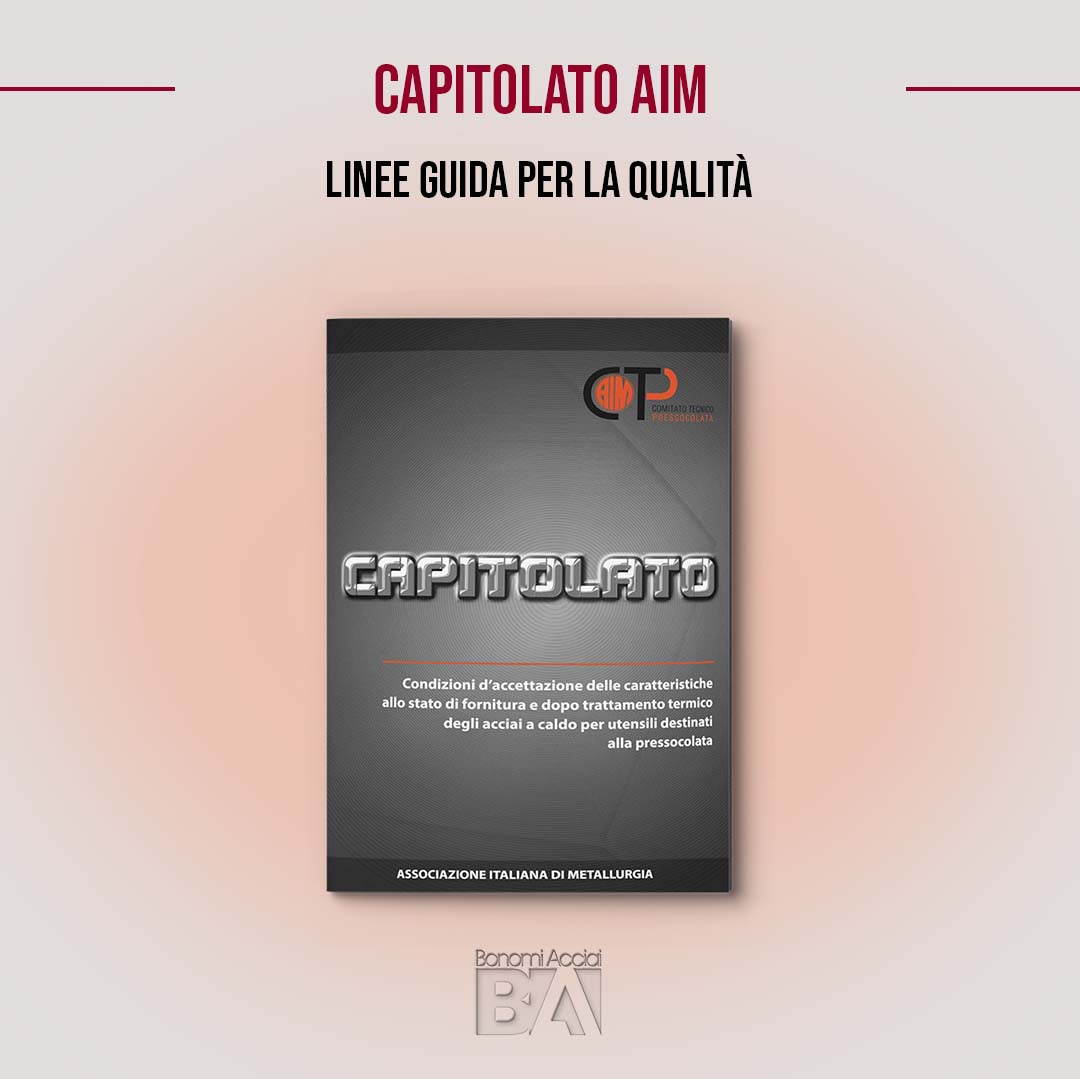In the die casting sector, die failure is an operational cost…
AIM Specification: Guidelines for Quality
In the light alloy die casting sector, ensuring quality and uniformity is fundamental. For this reason, the Specification from the Die Casting Study Center of AIM (Italian Association for Metallurgy) has been an essential reference point for years for die makers, designers, and foundries.

Why the AIM Specification is Important
The document “Acceptance conditions for the characteristics in the as-delivered state and after heat treatment of hot-work tool steels for die casting” compiles clear and shared guidelines, the result of work by a diverse group of industry experts. Its objective is to:
- Define common criteria for material evaluation.
- Establish uniform preliminary testing methods.
- Ensure homogeneity in data reading and comparison. In this way, the specification helps reduce ambiguity and uncertainty, fostering a common technical language within the supply chain.
A Focus on Toughness Tests
Among the most relevant content, the AIM specification precisely defines:
- The methods for taking test pieces from the steel blocks.
- The minimum dimensions and machining requirements.
- The minimum expected toughness values (KV and KVW) for steels such as 1.2343, 2340, 1.2344, and 1.2367.
These indications represent the guarantee of being able to rely on suitable, tested, and qualified steels to withstand the typical stresses of die casting processes.
An Authoritative Reference
The AIM specification is not just a technical document: it is a daily working tool that has taken on an increasingly central role in ensuring quality and uniformity.
Quality is born from shared knowledge and clear rules. Bonomi Acciai, the Italian partner of Swiss Steel Group, supports die makers and foundries by providing materials that comply with international standards and guidelines.
Want to learn more?




